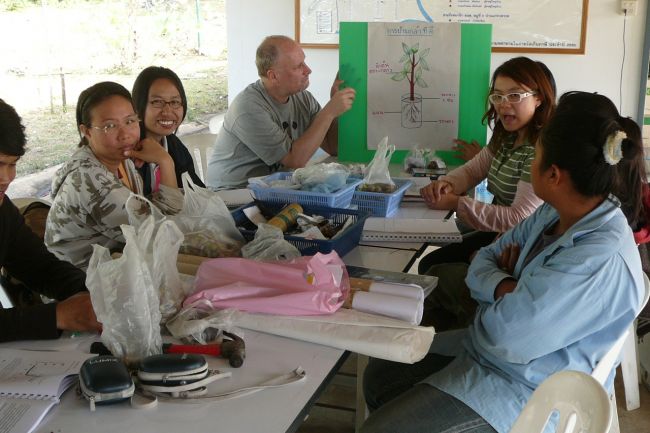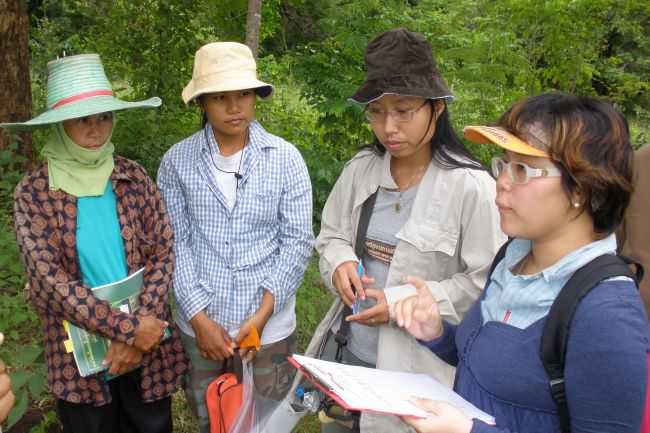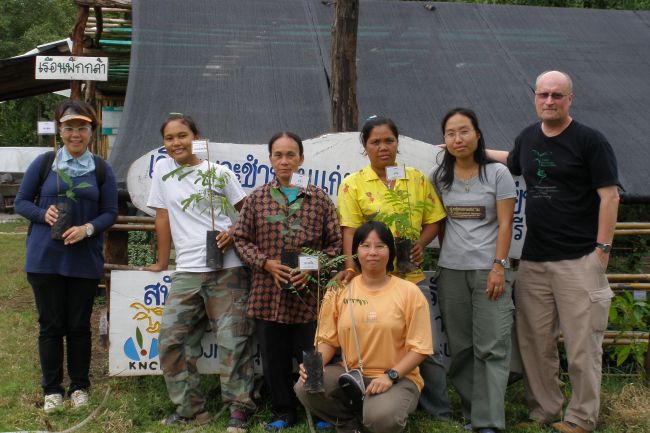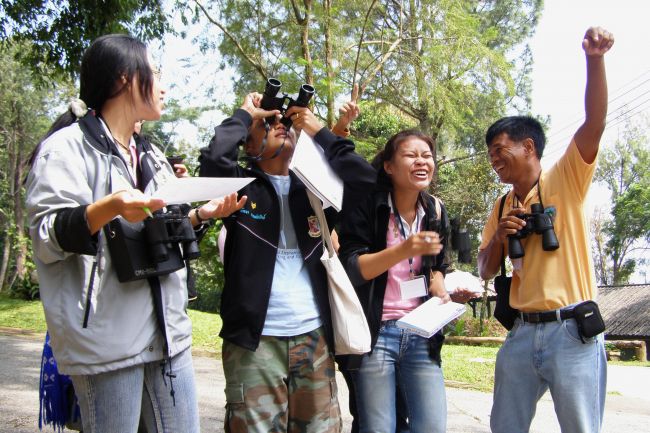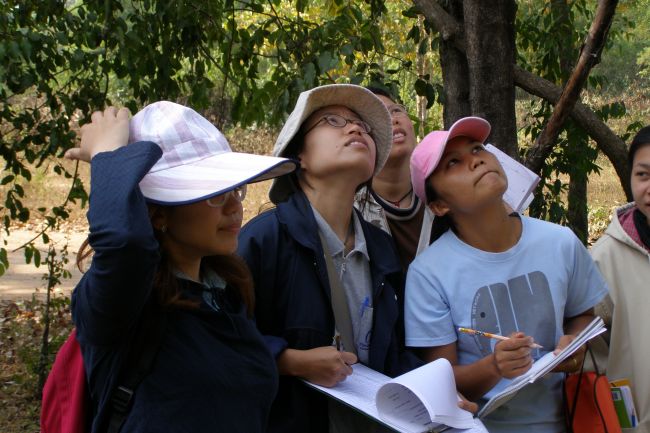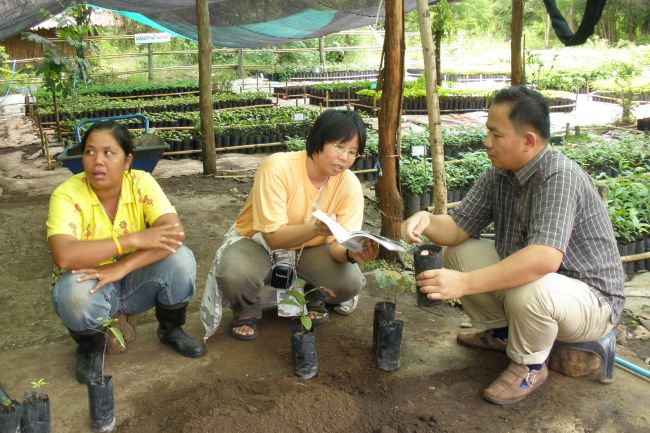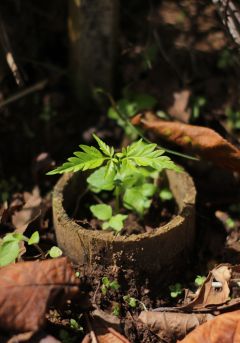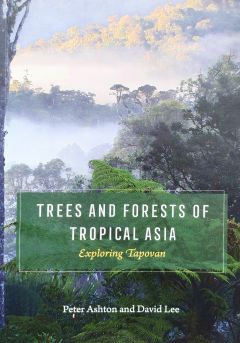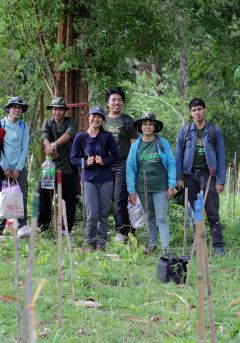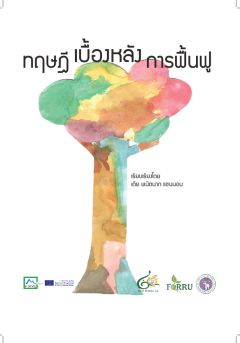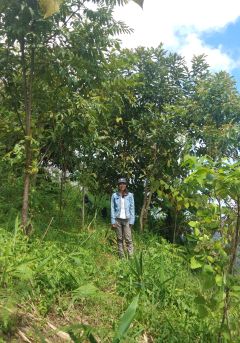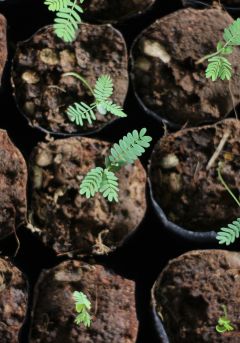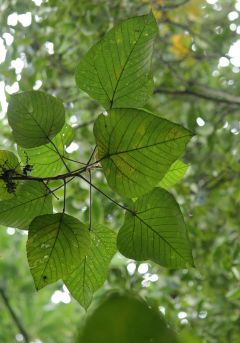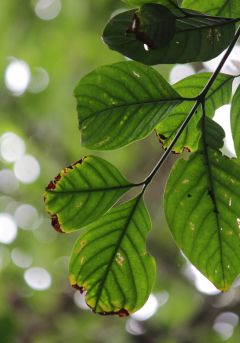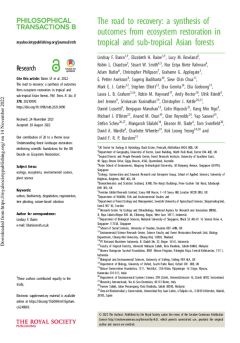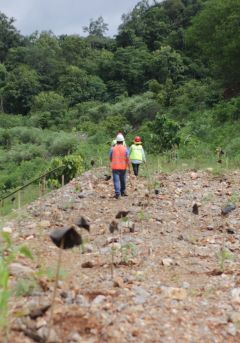
This project created an original knowledge-base to restore bamboo-deciduous forest in Western Thailand, particularly to create habitat for elephant conservation and to reduce human-elephant conflicts around the Salakpra Conservation Area, Kanchanaburi Province. The project was funded by the Keidanren Nature Conservation Fund with the Zoological Society of London (ZSL) and was implemented by the Elephant Conservation Network (ECN), with FORRU-CMU assisting with technical matters.
The objectives were:
- to develop local capacity to implement forest restoration activities;
- to determine tree species composition of the main forest formations in Salakpra;
- to determine optimal seed collection times/treatments to hasten seed germination & seedling growth;
- to develop and manage a community-based forest tree nursery and planting sites and
- to present initial results to stakeholders to empower them to implement forest restoration.
Activities and outputs
FORRU-CMU's inputs consisted mostly of training ECN staff on restoration theory and practices; training local people in nursery techniques so they could grow saplings of the required tree species and assisting with monitoring trial plots and analysing the data, culminating in a technical manual (in Thai) on how to restore the bamboo-deciduous forest that dominated lowland areas of Salakpra—bamboo being the main food of the several hundred wild elephants that inhabited the protected area.
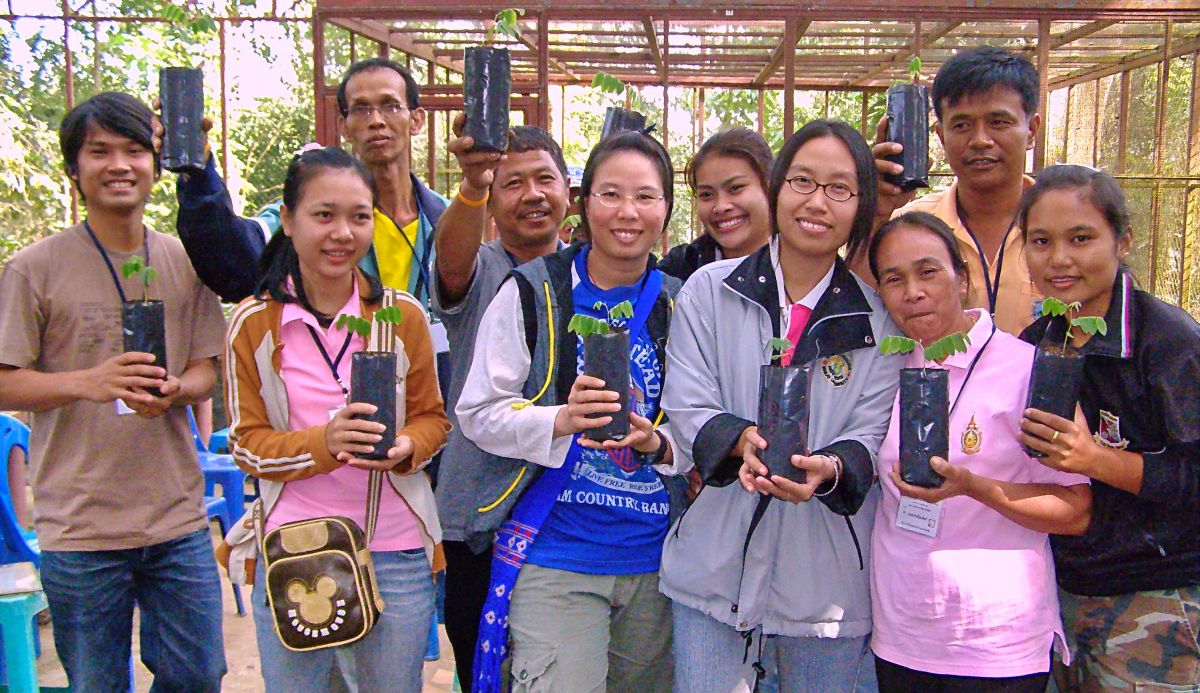
The final project activity, in September 2011, was an information-sharing workshop, with local foresters, community leaders, villagers and NGO representatives, at which the results of nursery experiments and field trials were presented, along with the resultant best practices detailed in the manual.
Field Performance of Planted Trees
Monitoring is essential for adaptive management. Click here to learn how to measure tree survival and growth and find out if your restoration plan is working.
1: Selecting suitable tree species for direct seeding to restore forest ecosystems in northern Thailand
ABSTRACT: To upscale restoration of tropical forest ecosystems, direct seeding—sowing seeds directly into the ground—is potentially more cost-effective than tree planting. However, its success is...
2: BOOK REVIEW: Trees and Forests of Tropical Asia: Exploring Tapovan by Peter Ashton and David Lee. University of Chicago Press. ISBN-13 978-0-226-53569-2
"...this profoundly inspirational book is a must-buy for anyone interested in tropical forests. It is a major reference work, which well-deserves a place on the bookshelves of all teachers and...
3: Developing Techniques for Direct-seeding for Forest Restoration in Northern Thailand
ABSTRACT: Forest restoration by direct seeding is potentially more cost-effective than tree-planting, especially for upscaling restoration of tropical forest ecosystems. Unfortunately, its success...
4: ทฤษฎีเบื้องหลังการฟื้นฟู
หนังสือเล่มนี้ได้รวบรวมเนื้อหาครอบคลุมถึงการรบกวนที่ส่งผลต่อกระบวนการฟื้นตัวของธรรมชาติ ทำให้มวลชีวภาพลดลงและสภาพดินเปลี่ยนแปลงไป...
5: Differential seed removal, germination and seedling growth as determinants of species suitability for forest restoration by direct seeding – A case study from northern Thailand
ABSTRACT: Direct seeding is potentially a more cost-effective alternative to conventional tree planting for restoring tropical forest ecosystems. However, seed loss, due to removal and damage by...
6: Effects of fertilizer on growth and biomass allocation of three evergreen tree species from seasonally dry tropical forests
ABSTRACT: Tree planting is widely accepted as a strategy to mitigate climate change, with a strong focus on use of native tree species. Various kinds of fertilizer have been recommended, to...
7: Phenology of Five Tree Species for Restoration of Evergreen Forests on Doi Suthep
ABSTRACT: In an evergreen forest on Doi Suthep, Chiang Mai Province, multiple individuals of five tree species were observed monthly for their phenology, between March 2022 and February...
8: Phenology of Five Framework Tree Species on Doi Suthep
ABSTRACT: Climate change occurs for many reasons causing global temperature to rise affecting changes in abiotic factors such as air temperature, rainfall and relative humidity. These abiotic...
9: The road to recovery: a synthesis of outcomes from ecosystem restoration in tropical and sub-tropical Asian forests
Abstract: Current policy is driving renewed impetus to restore forests to return ecological function, protect species, sequester carbon and secure livelihoods. Here we assess the contribution of...
10: Living Fungi in an Opencast Limestone Mine: Who Are They and What Can They Do?
Abstract: Opencast limestone mines or limestone quarries are considered challenging ecosystems for soil fungi as they are highly degraded land with specific conditions, including high...

